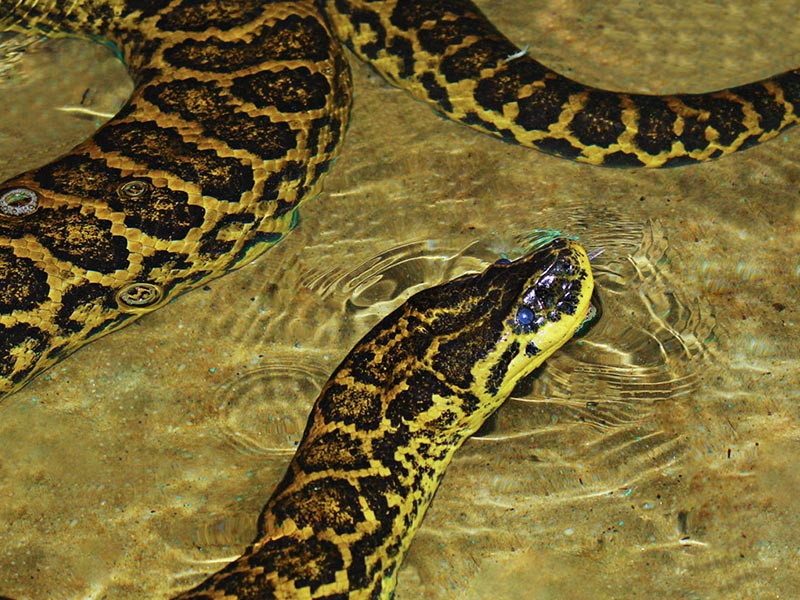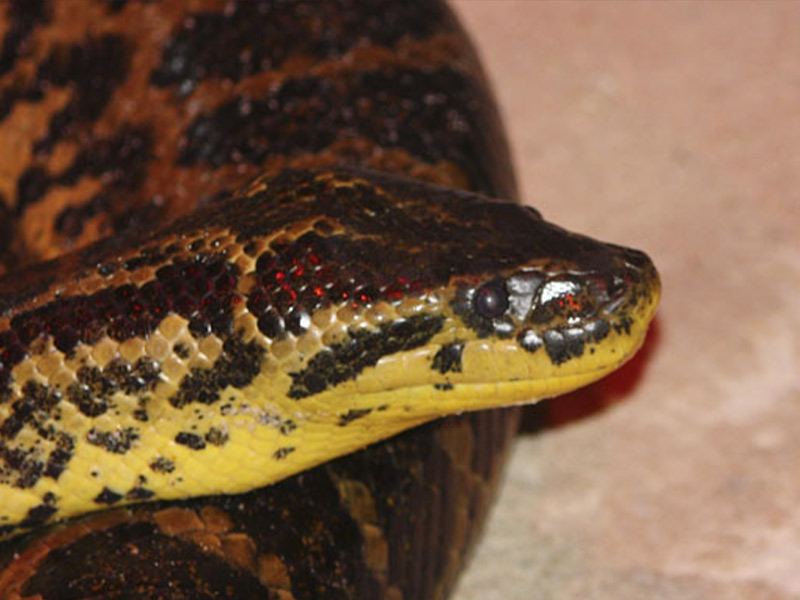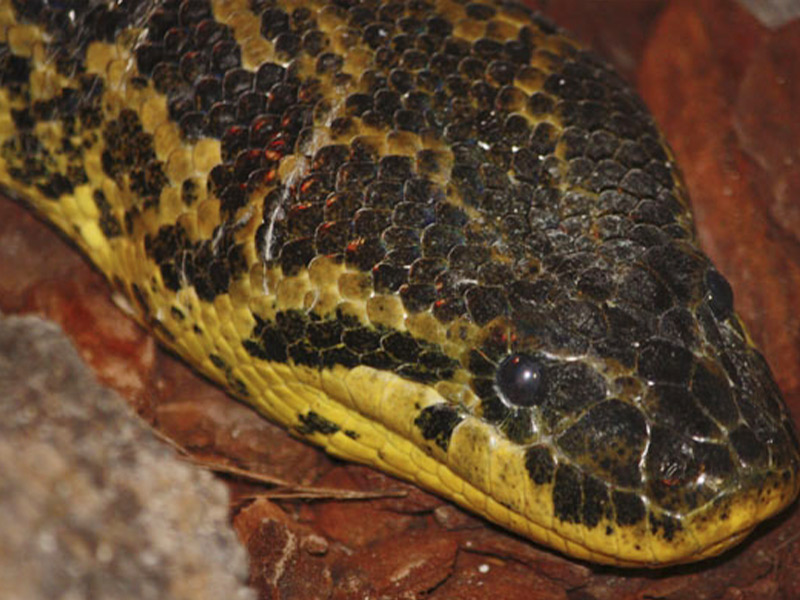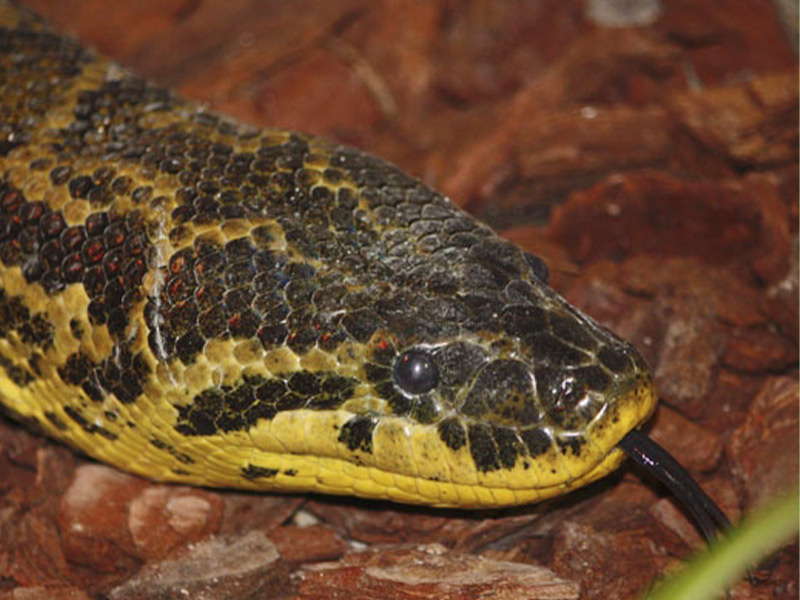



Yellow anaconda




















The yellow anaconda is found in southern South America, including Paraguay, southern Brazil, northeastern Argentina and Bolivia.
All anacondas have heat-sensitive pits located along the mouth that they use to find prey by detecting body heat emitted by warm-blooded animals. Females are larger than males.
It is a solitary species that only meets with other yellow anacondas to mate. At the time of mating, a female joins with several males in a ball. Males will compete to mate with the female, usually the largest male is successful. It is an ovoviviparous breeding animal. This means that, females incubate eggs inside their bodies and, after a gestation period of 6 months, give birth to 4 to 82 fully developed live young that are independent from birth.
It is an ambush hunter and a constrictor. It lurks in water and vegetation and attacks passing prey. When it catches its prey, it begins to wrap its body around the prey and starts to contract, then swallows the prey's head first by unhinging its jaws.
Its main threat is poaching.